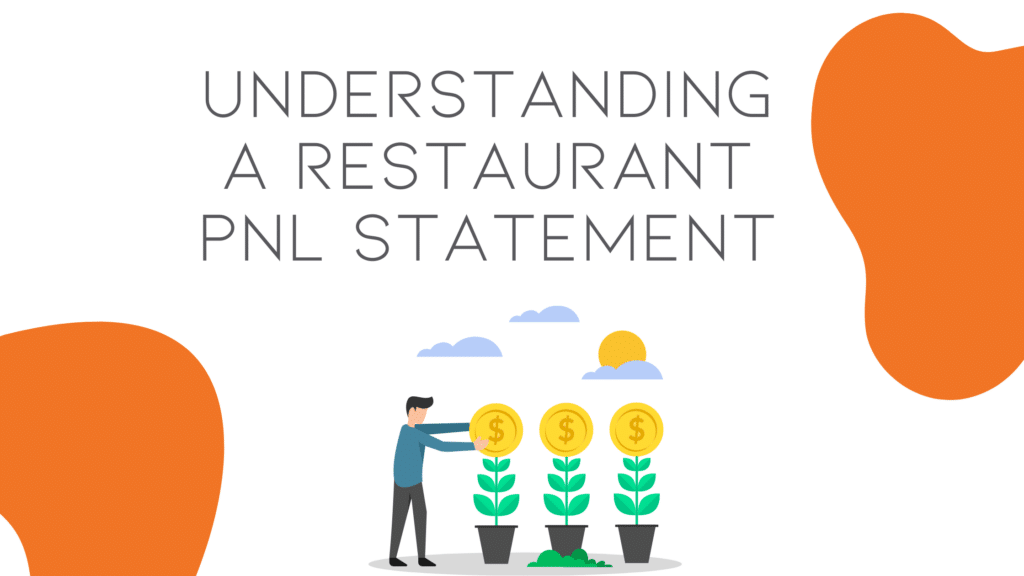For people who don’t own or run a business, spreadsheets can be the most boring things they’ve ever seen. They probably are for business owners as well with one of the few exceptions being a profit and loss statement.
Few documents can cause more euphoria or despair to a business owner or manager than a P&L statement.
What is a profit and loss statement?
A profit and loss statement, frequently abbreviated to “PnL”, records profits and losses over a period of time, usually a quarter or a fiscal year. This is opposed to the P&L statement’s cousin, a balance sheet, which captures a snapshot at any given moment.
Virtually all businesses regularly generate a PnL. Restaurant owners need to do so as well.
Why?
A properly prepared restaurant profit and loss statement will give a restaurateur a complete picture of the financial performance of their establishment over that period of time. It will be essential in guiding future decision-making. With a good PnL, restaurant owners will have a much clearer picture of what is working and not working for their restaurant.
So what goes into a PnL? Restaurants are obviously different kinds of businesses and have different costs but a PnL for a restaurant will have the same basic factors. Let’s look at those now.
The “profit” section: Revenue
This is where the “profit” part of the PnL will come from. This part is fairly straightforward: this is the profits from sales of food and drinks at your restaurant over the period of time you are assessing.
To get a very accurate picture of where most of your profits are coming from, it will help to break this down into subsections; food, alcohol, coffee, soft drinks, etc. If you are feeling particularly ambitious, you can even break these down into additional, even more specific subsections. Specific food items, kinds of alcohol, and so on.
It will be much easier to collect this information quickly and accurately if you have a system for automatically recording sales when they occur. We have software that can both do this for you and easily export the data into spreadsheets or accounting software.
The “loss” section: Costs, labor, and more
There are multiple factors to consider when constructing the loss section of a PnL. Restaurant owners will need to be thorough! While recording profits is much more fun and encouraging losses do matter. Every expense, no matter how small, needs to be considered and counted to make sure that you are generating accurate information.
Costs of goods sold
Cost of goods sold is basically just accounting-speak for the costs of inventory. For a restaurant, the cost of goods sold will largely be the food ingredients that you use to make your dishes. There may be other inventory that you need to consider.
For example, if you operate a food truck or a food cart and serve your food and drinks in Styrofoam clamshells, disposable cups, paper wraps or that sort of thing, you’ll want to include those costs in the costs of goods sold section.
For most restaurateurs, this will be the section to pay the most attention to if you are looking for ways to cut costs. For one, food ingredients will probably be one of your largest expenses.
For another, unlike firms that make durable goods whose inputs can sit for years and still be perfectly usable, most food ingredients tend to rot or expire in a fairly short period of time. If you are losing a lot of money to spoilage, this section of the PnL will help you to discover it.
Our inventory software can capture and store this data for you.
Labor
This is probably the most straightforward section of the PnL. Restaurant owners who employ people obviously have to pay them. Record those costs here.
This is another great section for discovering waste in your operations. It should go without saying that some employees are more productive than others. Even if every single one of your employees was operating at peak productivity all of the time, it is still possible that their labor isn’t being used in the most efficient way.
Careful examination of this data will help you to improve labor efficiently and may even help you decide if some functions can be automated or outsourced. To help you do this, we have software just for labor scheduling and tracking.
Operating expenses
This is the section of the PnL where you will record the everyday expenses related to running the business that do not go directly into goods sold.
This includes things like miscellaneous supplies like dishes, cutlery, and serving trays, maintenance and repairs, marketing, and advertising. If you thought that the in-house entertainment idea that we listed in a previous blog entry was a good idea, this is where you would include the costs of hiring entertainers who work on a freelance basis.
Occupancy expenses
These are the costs of keeping the lights on so to speak. These are overhead costs associated with the location you operate.
If you are renting a building or have a mortgage on the one you would include those costs here. This section would also include utilities, insurance, and taxes.
Unfortunately, this is probably the group of expenses that you would have the hardest time reducing through unilateral action on your part and without consultation with an expert. While there are ways of reducing expenses in this section (refinancing mortgages, installing smart utility infrastructure, exploiting tax incentives, renegotiating rents) this is beyond the scope of a PnL and this blog entry.
Depreciation
Unfortunately, everything is slowly falling apart around you. From the simple hand mixer used by your pastry chef to the state-of-the-art espresso machine that you bought a few years ago, all of the stuff that you have is getting older and slowly breaking down. All of these things are assets that you could theoretically liquidate and their loss in value needs to be recorded.
Proper maintenance will keep your facilities and the equipment inside running for longer and keep depreciation to a minimum.
Financial fear or triumph: crunching the numbers
Okay, you’ve collected and assembled all of the data. At this point do some basic arithmetic or enter some fairly simple spreadsheet formulas and you will get your net profit/loss for the period being analyzed.
Obviously, if this metric is a positive number, you’ve made a profit! If it’s a negative number, you’ve suffered a loss.
This data will be most helpful if you compare the PnL that you just created with PnL statements from previous years. If you’ve broken down the data into specific subsets like suggested above, you’ll be able to compare the year-on-year performance of specific amenities that your restaurant offers.
For example, if you consistently find that a specific menu item or even an entire menu section underperforms years after year, you might consider either tweaking it or nixing it entirely.
If you have suffered a loss over a specific time period, don’t despair!
Virtually every business has bad quarters or years. It’s unavoidable. Sometimes it’s for reasons beyond your control like a recession or, as in the case of Covid-19, a state-mandated shut down of many activities.
Even during comparatively normal times, you are probably going to have a few bad years. A few years of losses in a row, especially large ones, is probably signaling trouble ahead. One or two years in the red every few years? That might not be a reason for concern.
In any case, think of a year of losses as an opportunity to make some big changes and turn things around. Remember the SWOT exercise that we discussed in a previous blog? Consider performing one of those if you have not done so in a while. Using your PnL and the data that you used to generate it can give you some quantitative insights into your SWOT analysis and help you zero in on what your strengths, weaknesses, opportunities, and threats are.
Final thoughts
The food and beverage industry is tough. Margins are low, competition is plentiful and fierce, public tastes change and as a cyclical industry, it is highly exposed to changes in the economy that are far outside of the control of a single restaurateur.
You need every advantage that you can get. Generating and carefully analyzing PnL documents at least once a year, maybe even every quarter, will give you a highly useful tool for giving your business an advantage.
Combining PnL documents with other financial statements and analysis tools can give you, even more, insight and direction.
As we said before, losses some years are inevitable. Don’t let losses or fear of losses paralyze you with fear or tempt you to ignore issues and hope they go away on their own (they usually won’t). Understand that good years and bad years are both parts of the business cycle.
During the good years, celebrate and prepare for the bad years. PnL statements, combined with other tools, can help you do this.
You will need data. Lots and lots of data. We can help you to gather, store and analyze this data with our suite of restaurant management software. Everything that you need to capture and safely store information on sales, purchasing, labor, and every other aspect of managing a restaurant can be found in one of our applications and carried around with you in the palm of your hand.
Please get in touch with us so we can demo our software and its capabilities.
Best of luck!





